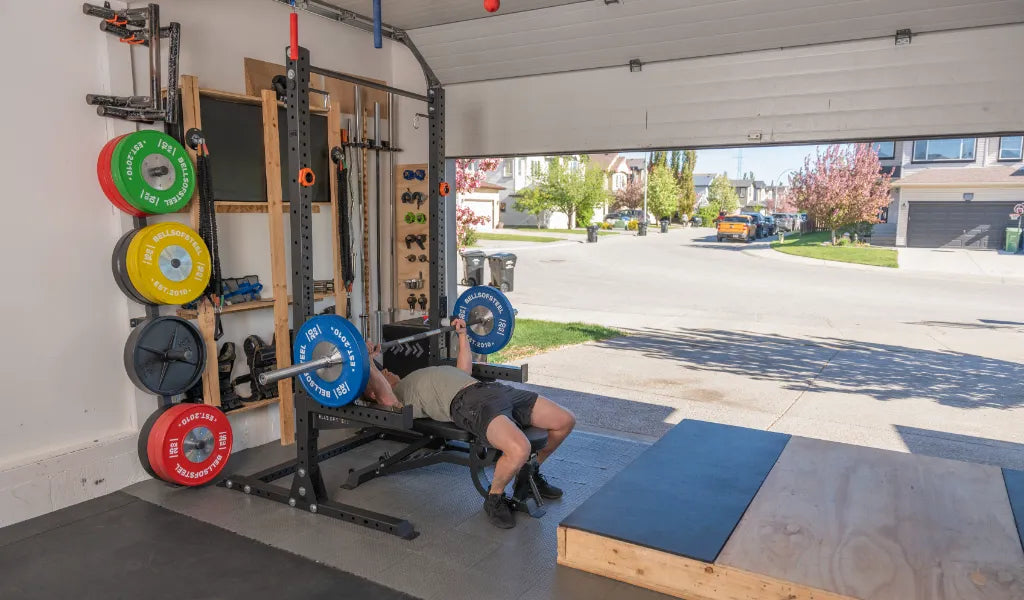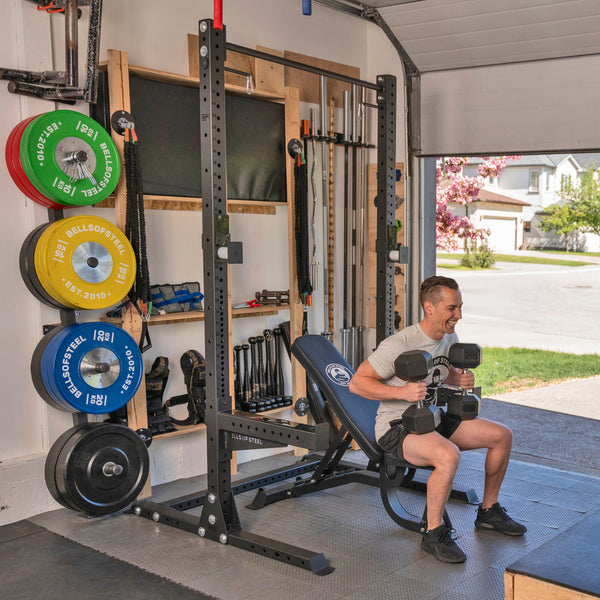Ah, the allure of the home gym—a paradise where you can train on your schedule, blast your music, and avoid awkward gym encounters. But what happens when the novelty wears off, and that sweet motivation disappears faster than your New Year’s resolution? Don’t worry; staying consistent isn’t about waiting for motivation to strike—it’s about building habits that stick.
Let’s explore how to stay on track, the science behind motivation, and strategies to crush your workouts, even on the laziest days.
Motivation vs. Dedication: The Key to Consistency
Motivation is like that flaky friend who only shows up when it’s convenient. Dedication, however, is the reliable partner who’s there through thick and thin. While motivation can kickstart your journey, it’s dedication and consistency that carry you to your goals.
Key takeaway: Stop chasing motivation—it’s fleeting. Instead, create systems and habits that keep you showing up, regardless of how you feel.
Intrinsic vs. Extrinsic Motivation
Intrinsic Motivation
This is your internal drive. It’s when you work out because you genuinely enjoy the process or want to feel healthier, stronger, or more capable.
Extrinsic Motivation
This is fueled by external rewards like hitting a goal weight, earning compliments, or smashing a new personal record (PR).
Pro-tip: Extrinsic motivation can get you started, but tapping into intrinsic motivation is what keeps you going long-term. Focus on how training improves your quality of life, not just the numbers on the scale or the plates on the barbell.
Strategies for Overcoming Low Motivation
1. The 5-10 Minute Rule
Commit to just 5-10 minutes of movement. Whether it’s a quick stretch, warm-up, or bodyweight circuit, give yourself permission to stop after that if you’re still not feeling it. Most of the time, the hardest part is starting, and those first few minutes lead to a full workout.
Why it works: Movement releases endorphins—the brain’s natural “feel-good” chemicals. Once you’re moving, chances are you’ll want to keep going.
2. Find Your Why
Dig deep into why you’re training. Maybe it’s to be a role model for your kids, maintain independence as you age, or simply feel confident and strong. Write it down and revisit it when you’re in a slump.
Action step: Create a vision board with images or quotes that reflect your “why.” Keep it in your workout space as a reminder.
3. Build a Routine
Motivation often fails when decision fatigue sets in. If you have to constantly decide when and what to train, you’re more likely to skip it. Instead, make workouts a non-negotiable part of your day, like brushing your teeth.
Example: Train every Monday, Wednesday, and Friday at 7 PM—no excuses, no deliberation.
4. Set Small, Achievable Goals
Big goals can feel overwhelming and demotivating when progress stalls. Break them down into smaller milestones that you can celebrate along the way.
Example: Instead of aiming to squat 300 lbs by next year, focus on adding 5 lbs to your squat every few weeks. And celebrate every little PR!
5. Track Your Progress
Logging your workouts helps you see how far you’ve come. Whether it’s lifting heavier, running faster, or recovering quicker, tangible progress can reignite your drive.
Apps and tools: Use a fitness app or a good old-fashioned notebook to track sets, reps, and weights.
6. Switch It Up
If your workout feels stale, boredom might be the culprit. Experiment with new training styles, exercises, or equipment to keep things fresh.
Ideas:
- Try supersets for a time-efficient pump.
- Incorporate resistance bands for variety.
- Add a new power rack attachment or accessory.
7. Reward Yourself
Give yourself something to look forward to after a tough session. This could be a smoothie, a new gym shirt, or even just a well-deserved Netflix binge.
Bonus: Positive reinforcement helps cement good habits.
Gym Motivation FAQs
Q: How do I stay consistent when life gets busy?
A: Life happens, but short workouts are better than none. If time is tight, do 20 minutes of compound movements like squats, deadlifts, or push-ups.
Q: I don’t feel motivated anymore. Is that normal?
A: Completely! Motivation ebbs and flows. That’s why building a habit and finding your “why” is so crucial. Focus on discipline over desire.
Q: What if I don’t have time for a full workout?
A: Use micro-sessions! Split your workout into smaller chunks throughout the day. Five minutes here and there adds up.
Q: How do I get back on track after skipping workouts?
A: First, ditch the guilt—it’s counterproductive. Start with a light session to rebuild momentum and remember why you started in the first place.
Final Thoughts
Staying motivated in your home gym isn’t about finding an endless supply of willpower—it’s about setting yourself up for success with smart habits and a clear “why.” Remember, even the strongest lifters have off days. The key is to show up, even if it’s just for 5 minutes, and trust that consistency will pay off.
So dust off those dumbbells, crank up your favorite playlist, and keep chasing those gains. Your future self will thank you.




